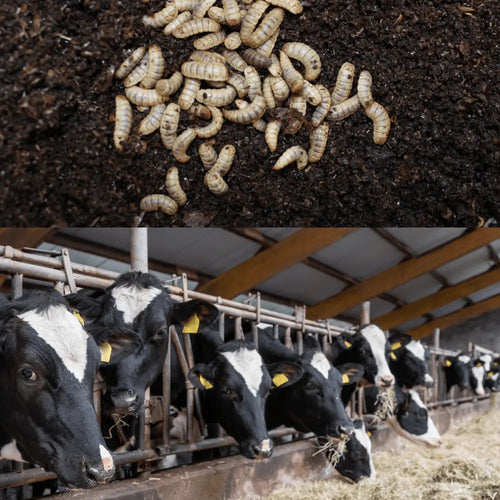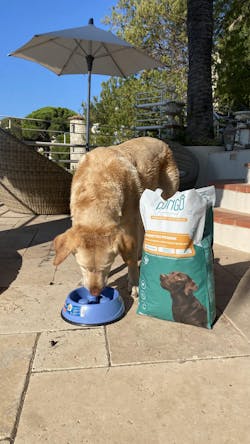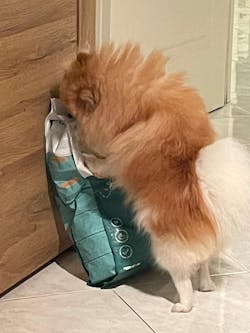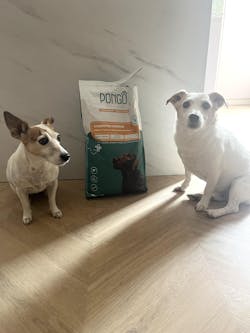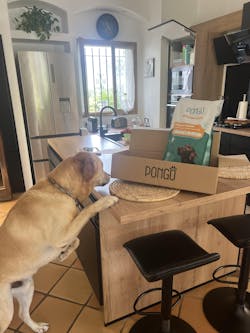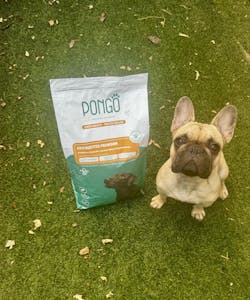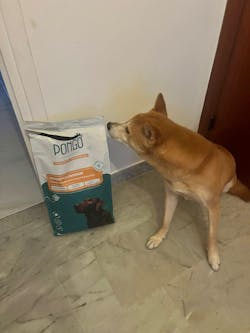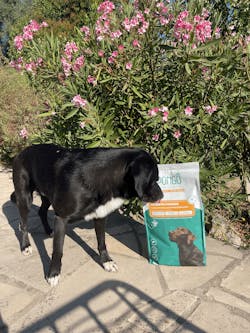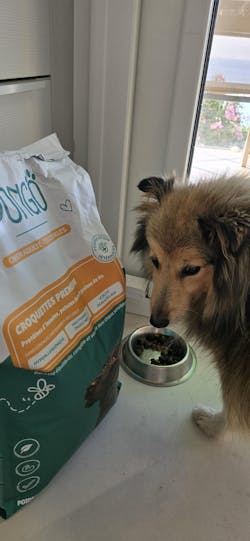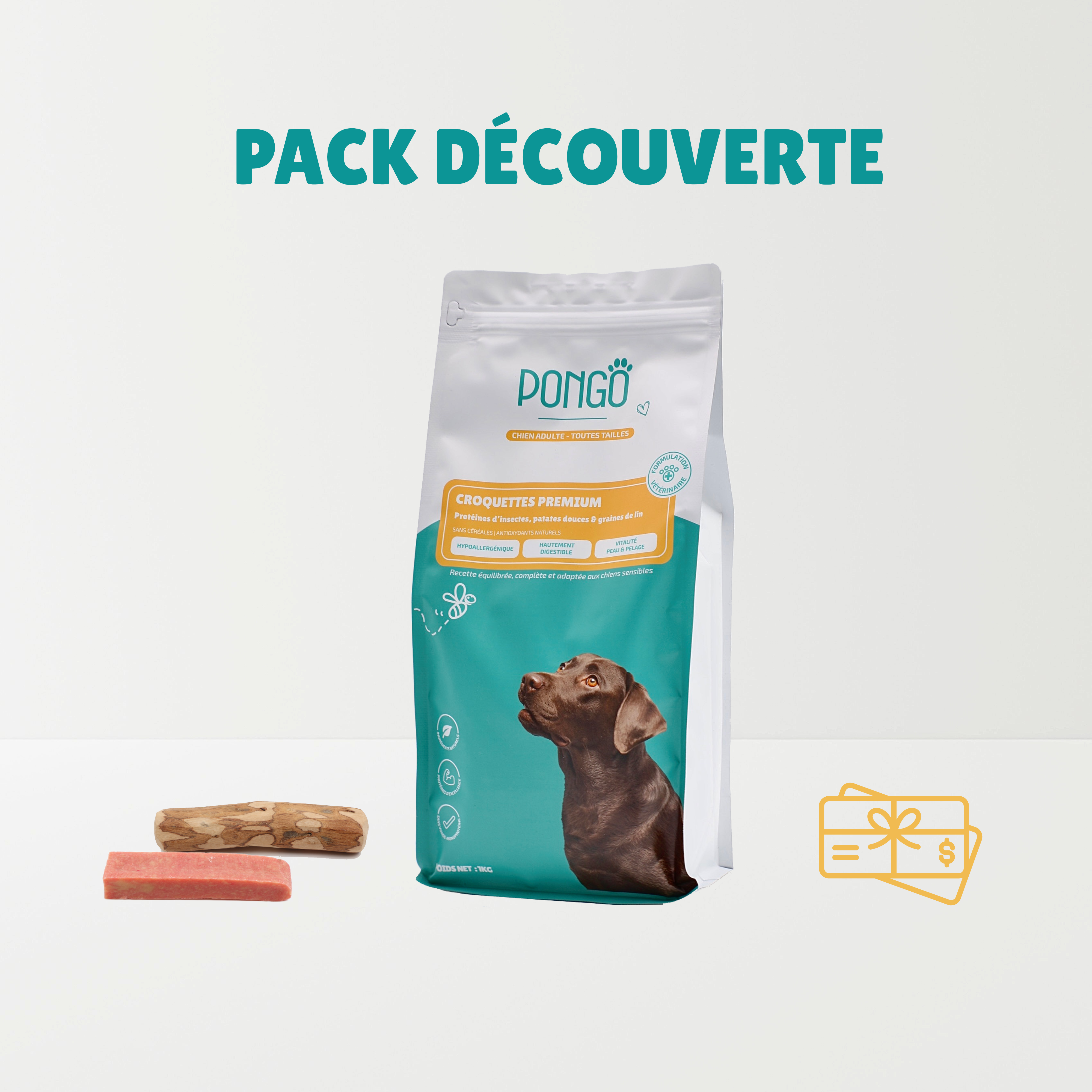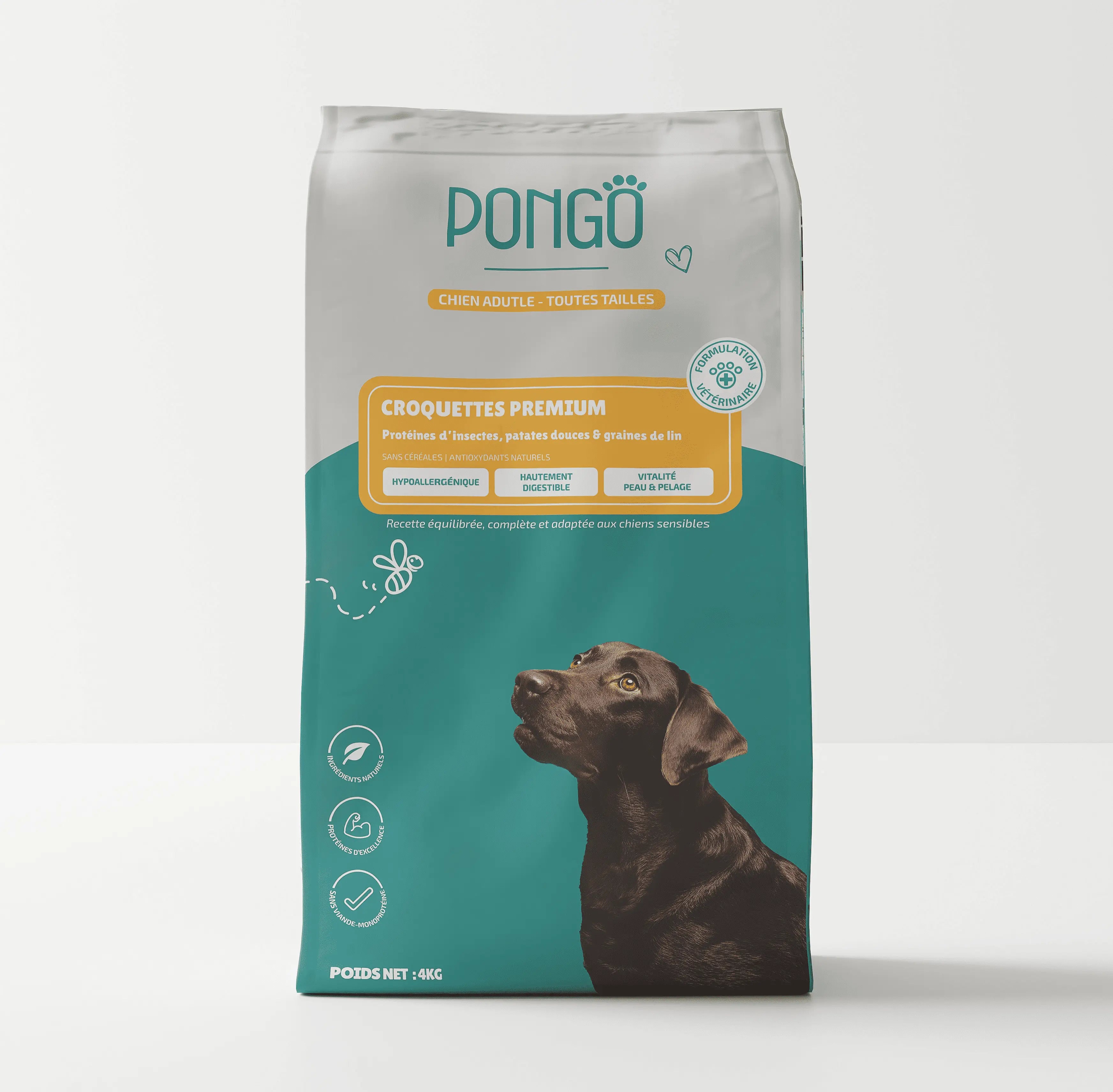The elimination diet to understand and manage food allergies
Does your dog suffer from allergies ? This article is for you !
The elimination diet is a rigorous method used to identify the allergens responsible for food reactions in dogs and cats. Often recommended by veterinarians, this process helps diagnose and manage food allergies a common issue in pets.
What is an elimination diet ? 🧐
This approach involves removing all common potential allergens from your pet’s diet and observing their reactions over an extended period.
The goal of the elimination diet is to detect the substances responsible for unwanted symptoms. Once the allergen is identified, it becomes possible to adjust the animal’s diet to prevent future reactions.
What are the symptoms of a food allergy ? 🤒
Food allergies in dogs are manifested by various signs, mainly dermatological and digestive :
1) Dermatological symptoms
-
Persistent itching, especially around the ears, paws, or belly
-
Localized hair loss
-
Redness, scabs, or patches on the skin
2) Digestive symptoms
-
Frequent vomiting
-
Chronic or recurring diarrhea or soft stools
-
Bloating and excessive gas
3) Other possible symptoms
-
Chronic or recurring ear infections
-
Irritability or fatigue due to discomfort
-
In rare cases, respiratory signs like sneezing or coughing may appear
What foods cause food allergies? ❌
Food allergies are often caused by specific proteins or ingredients :
1) Animal proteins 🍗
-
Chicken
-
Beef
-
Fish
-
Eggs
2) Plant proteins 🌾
-
Soy
-
Wheat
3) Additives and other ingredients 🥛
-
Artificial preservatives
-
Food colorings
-
Dairy products
How does the elimination diet work?
Step 1: Choosing the right foods ✅
Choose novel protein sources your pet has never eaten before. These diets often include a unique protein like insects and a specific carbohydrate source such as rice or sweet potato.
⚠️ Tip: Gradually introduce the new food over a week before officially starting the diet to avoid digestive issues. Like any dietary change, a proper transition period is essential (see below for details).
Step 2: Observation period 🔎
The elimination diet must be strictly followed for 8 to 12 weeks to ensure reliable results. To avoid bias, it’s strongly advised not to give any treats or table scraps during this period. The aim is to check whether the symptoms disappear.
Step 3: Gradual reintroduction 🐾
If symptoms improve, the previous ingredients are reintroduced one by one to identify the exact cause of the reaction. This will help determine which food your dog is allergic to so you can eliminate it permanently.
Step 4: Transition to a new long-term diet 😍
Once the allergen is identified (e.g., chicken or beef), it’s time to switch to a new diet with a novel or hydrolyzed protein. You can continue with insect-based kibbles, which are an excellent alternative to traditional proteins like beef, chicken, or fish.
Conclusion
The elimination diet is the most reliable diagnostic tool for confirming a food allergy. It relies on direct observation of how your pet reacts to specific ingredients.
If in doubt, always consult your veterinarian, who can guide you through the process.
Our PONGO single-protein insect-based kibbles, made from innovative and hypoallergenic proteins, are ideal for this type of diet and perfect for maintaining a balanced and allergy-friendly diet. They are also highly digestible, providing optimal digestive comfort.
Discover our innovative & hypoallergenic PONGO kibbles
To learn more, visit us here



